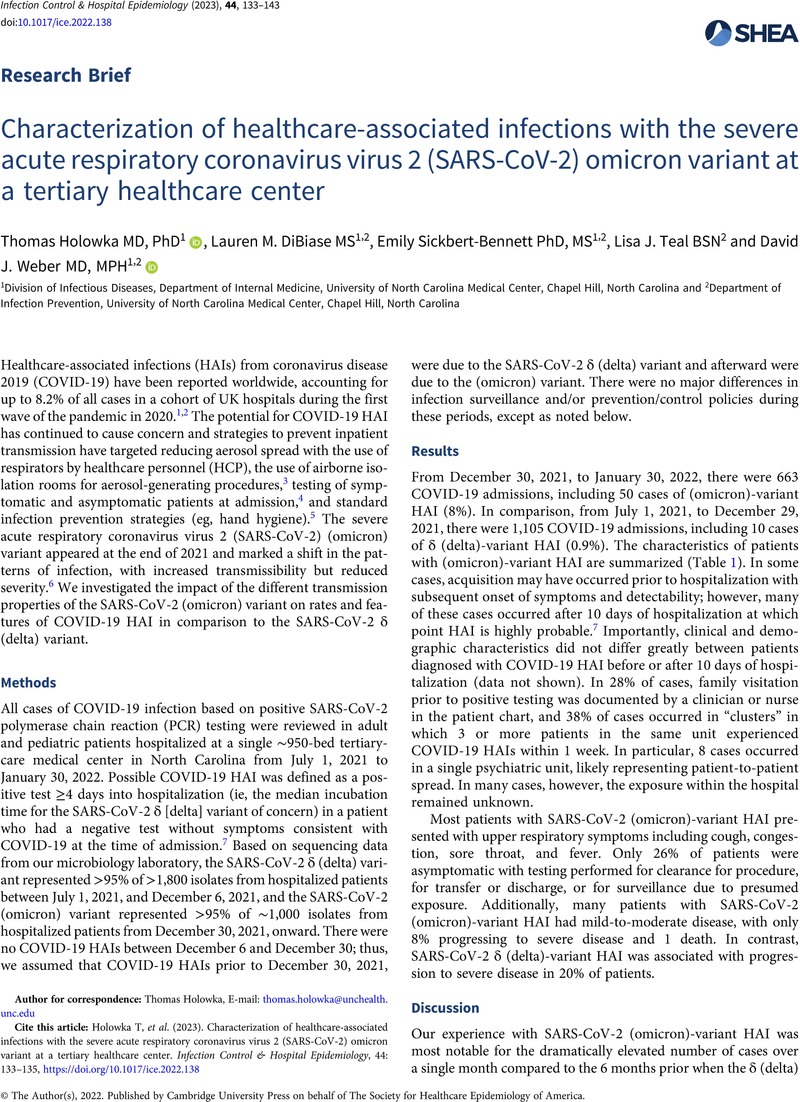Crossref Citations
This article has been cited by the following publications. This list is generated based on data provided by Crossref.
Williams, Victoria R.
Tan, Charlie
Kozak, Robert
and
Leis, Jerome A.
2023.
Incidence and outcomes of hospital-associated coronavirus disease 2019 (COVID-19) before and after emergence of the severe acute respiratory coronavirus virus 2 (SARS-CoV-2) omicron variant.
Infection Control & Hospital Epidemiology,
Vol. 44,
Issue. 10,
p.
1698.




